Wood glue is an essential component in woodworking and DIY projects, playing a crucial role in creating strong, lasting bonds between wooden pieces. Whether you’re a professional carpenter or an enthusiastic hobbyist, understanding how strong is wood glue can make a significant difference in the quality and durability of your creations. In this article, we will delve into the importance of wood glue in various woodworking applications, and discuss the factors that affect the strength of wood glue. By gaining a deeper knowledge of wood glue strength, you’ll be better equipped to choose the right adhesive for your projects and achieve more reliable, long-lasting results.
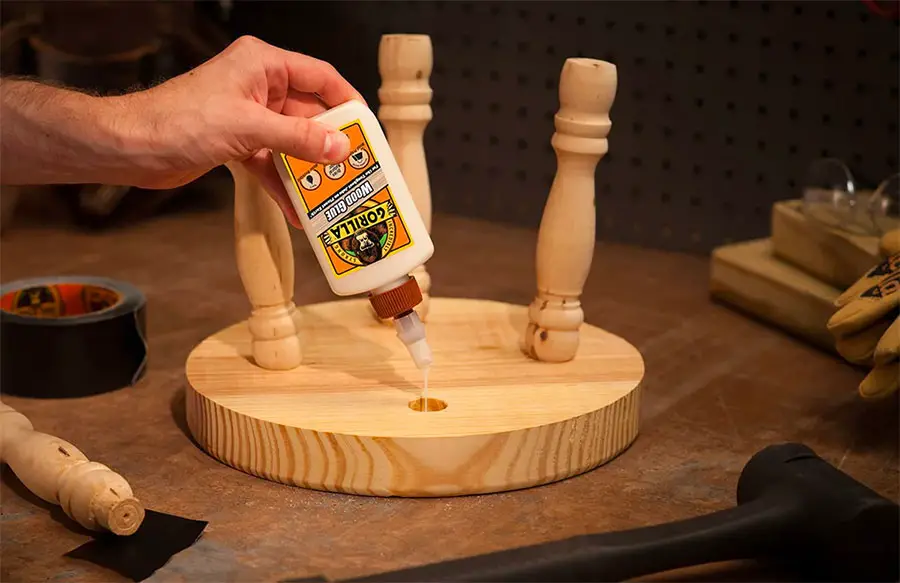
Common Types of Wood Glue and Their Strengths
1. PVA Wood Glue: The Most Popular Choice
PVA (polyvinyl acetate) wood glue is the most widely used adhesive in woodworking due to its affordability, ease of use, and compatibility with most wood types. PVA glue creates a strong bond, and when cured, can often be stronger than the wood itself. It dries clear and can be sanded and painted over, making it ideal for a wide range of woodworking applications. However, it is important to note that PVA glue is not waterproof and should not be used for outdoor projects where water exposure is a concern.
2. Polyurethane Glue: Waterproof and Durable
Polyurethane glue is a versatile and robust adhesive known for its waterproof and weather-resistant properties. This type of glue expands as it cures, filling any gaps between the wood pieces, creating a strong bond even with irregular surfaces. Polyurethane glue is ideal for outdoor projects or situations where moisture resistance is crucial. However, it can be more challenging to work with due to its longer curing time and the need for proper ventilation during application.
3. Two-Part Epoxies: Heavy-Duty Bonding
Two-part epoxies are a powerful adhesive option for heavy-duty bonding and structural applications. These glues consist of a resin and a hardener that, when mixed, create an incredibly strong bond capable of withstanding significant stress and load. Epoxy adhesives are compatible with various materials, including wood, metal, and plastic, making them suitable for a wide range of projects. However, they can be more expensive and require precise mixing and application to achieve optimal results.
4. Hide Glue: Traditional Yet Effective
Hide glue, made from animal collagen, is a traditional adhesive used in woodworking for centuries. It offers a strong bond and is reversible, meaning it can be softened with heat or moisture, allowing for easy disassembly or adjustments. This characteristic makes hide glue popular among furniture restorers and makers of musical instruments. However, it has a shorter open time and requires heating before use, making it less convenient than modern alternatives for some applications.
5. Cyanoacrylate Glue: Fast-Setting and Strong
Cyanoacrylate glue, commonly known as super glue, is a fast-setting adhesive that creates a strong bond within seconds of application. While not specifically formulated for woodworking, it can be used for small repairs or in combination with other adhesives to provide additional strength. Cyanoacrylate glue is ideal for situations where quick bonding is necessary, but it has a shorter shelf life and may not be as durable as other wood glue types.
How Strong is Wood Glue: Factors Affecting Wood Glue Strength
Type of wood being joined
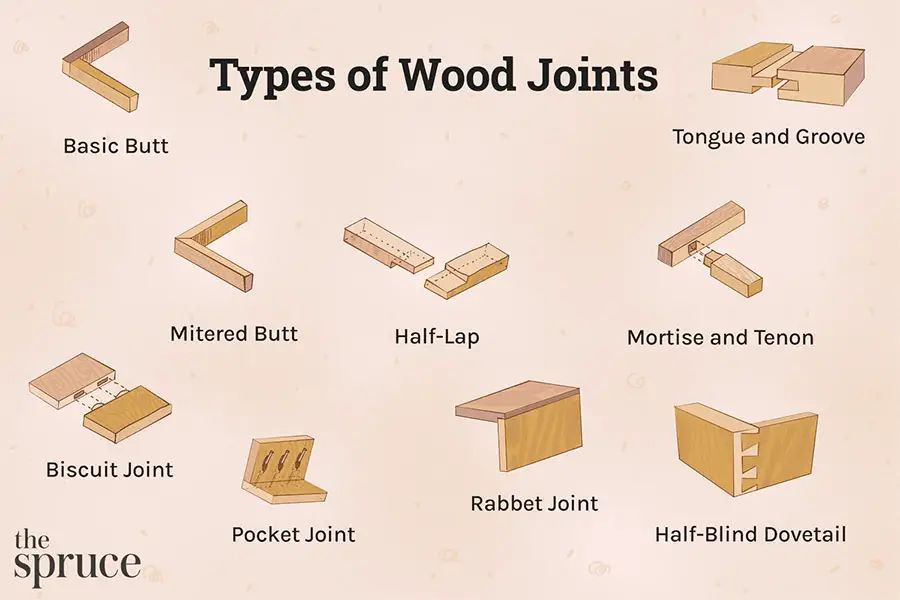
The type of wood being joined plays a significant role in the strength of the bond created by wood glue. Hardwoods, like oak and maple, have dense fibers that can make it more challenging for the glue to penetrate and create a strong bond. Softwoods, such as pine and spruce, are more porous, allowing for better glue penetration and adhesion. It’s essential to choose a glue that is compatible with the specific wood type to ensure optimal bonding strength.
Surface preparation and cleanliness
Proper surface preparation and cleanliness are crucial for achieving a strong wood glue bond. The wood surfaces should be flat, smooth, and free from dust, dirt, or grease. Any contaminants on the wood surface can hinder the glue’s ability to create a strong bond. Sanding the surfaces and wiping them clean with a cloth before applying glue can significantly improve the bond strength.
Correct glue application techniques
Applying the right amount of glue is essential for optimal bond strength. Too little glue can result in weak joints, while too much glue can cause the adhesive to be squeezed out of the joint, leaving insufficient glue in the bond. It’s important to apply a thin, even layer of glue to both wood surfaces, ensuring full coverage without excessive adhesive.
Clamping pressure and duration
Clamping pressure is critical to the success of wood glue bonding. Proper clamping pressure ensures that the wood surfaces are held tightly together, allowing the glue to penetrate the wood fibers and create a strong bond. However, excessive pressure can cause the glue to be squeezed out of the joint, leading to a weak bond. It’s essential to apply just enough pressure to hold the wood pieces firmly together without distorting the joint. Additionally, allowing the glue to cure for the recommended duration under clamping pressure will ensure a strong bond.
Curing time and environmental conditions
The curing time and environmental conditions can significantly impact wood glue strength. Most wood glues require a specific curing time, typically ranging from a few hours to 24 hours, depending on the type of glue and the manufacturer’s recommendations. Allowing the glue to cure for the required time will result in a stronger bond. Environmental factors, such as temperature and humidity, can also affect the curing process. Most wood glues perform best at room temperature and moderate humidity levels. It’s essential to follow the manufacturer’s guidelines for optimal curing conditions to achieve maximum bond strength.
Why is wood glue so strong?
Wood glue is strong because it forms a molecular bond with the wood fibers, creating a tight connection between the surfaces being joined. Additionally, some wood glues, like PVA, can create bonds stronger than the wood itself under ideal conditions. The strength of wood glue is a result of its chemical composition, which is specifically designed to form a durable and lasting bond with wood fibers when applied and cured correctly.
Wood Glue Strength: Common Misconceptions
Is wood glue stronger than wood?
A common misconception is that wood glue is always stronger than the wood itself. While it is true that some wood glues, like PVA, can create bonds stronger than the wood itself, this statement does not hold for all types of wood and glue combinations. The strength of the bond depends on various factors, such as the type of wood being joined, surface preparation, glue application, and clamping pressure. In some cases, the bond created by wood glue can indeed be stronger than the wood, while in others, it may not be.
Is wood glue stronger than nails or screws?
Another misconception is that wood glue is categorically stronger than nails or screws. The strength of a joint created using wood glue or fasteners like nails or screws depends on the specific application and materials used. In many cases, wood glue can create a stronger and more invisible bond compared to nails or screws. However, nails and screws offer mechanical support and can be more suitable for certain applications, like heavy-duty construction or projects subject to significant stress. Often, a combination of wood glue and mechanical fasteners can provide the best results in terms of strength and durability.
Does more glue always result in stronger joints?
It is a common belief that applying more glue will result in a stronger joint. However, this is not always true. Excessive glue can cause the adhesive to be squeezed out of the joint when clamping pressure is applied, leaving insufficient glue in the bond and compromising the joint’s strength. The key to achieving a strong bond is applying a thin, even layer of glue to both wood surfaces, ensuring full coverage without excessive adhesive. Proper clamping pressure and curing time also contribute to the overall strength of the joint.
Maximizing Wood Glue Strength: Tips and Best Practices
Choosing the right glue for the job
- Assess the specific requirements of your project, such as wood type, indoor or outdoor use, and water resistance.
- Research the properties of various wood glues to determine the most suitable option for your needs.
- Consult manufacturer guidelines and recommendations for the best performance.
Proper surface preparation techniques
- Sand the wood surfaces to ensure they are flat and smooth.
- Clean the surfaces with a cloth to remove any dust, dirt, or grease.
- Make sure the wood surfaces are dry and free of moisture before applying glue.
Applying the correct amount of glue
- Apply a thin, even layer of glue to both wood surfaces.
- Spread the glue evenly using a brush or your finger, ensuring full coverage.
- Avoid using excessive glue, as it can compromise the strength of the joint.
Ensuring adequate clamping pressure and time
- Use appropriate clamps or other methods to apply pressure to the joint.
- Adjust the clamping pressure to hold the wood pieces firmly together without distorting the joint or squeezing out too much glue.
- Follow manufacturer recommendations for clamping duration to ensure the best bond strength.
Allowing sufficient curing time
- Consult the manufacturer’s guidelines for the recommended curing time for your specific wood glue.
- Allow the glue to cure undisturbed in a controlled environment with proper temperature and humidity levels.
- Resist the temptation to unclamp or stress the joint before the glue has fully cured to ensure maximum bond strength.
FAQ
In this section, we will address some more common questions related to wood glue strength and usage that have not been covered in the main article. These questions can provide further insights and help clarify any lingering doubts you may have about working with wood glue.
How much weight can wood glue hold?
The weight that wood glue can hold depends on various factors, including the type of glue, the wood species, surface preparation, and proper application techniques. In general, a well-executed wood glue joint can hold a significant amount of weight, often in the range of several hundred to a few thousand pounds per square inch. However, it’s essential to follow the manufacturer’s guidelines and best practices to ensure the strongest bond possible.
How long does wood glue take to reach maximum strength?
Wood glue typically takes between 24 to 72 hours to reach maximum strength, depending on the type of glue, temperature, and humidity. While most wood glues will set and hold the pieces together within a few hours, it’s crucial to allow the glue to cure fully before subjecting the joint to stress. Consult the manufacturer’s guidelines for the recommended curing time for your specific wood glue.
What is the strongest wood glue available on the market?
The strength of wood glue varies depending on the type and brand. Some of the strongest wood glues available on the market include two-part epoxies, polyurethane glues, and certain PVA glues. However, the best glue for your specific project depends on factors such as the type of wood, the application, and the required level of water resistance. It’s essential to consider these factors and choose a glue that meets your project’s specific needs.
Can wood glue be used for outdoor projects?
Some wood glues are specifically formulated for outdoor use and provide excellent water resistance and durability. Polyurethane glues and certain types of PVA glues, like Titebond III Ultimate Wood Glue, are suitable for outdoor projects due to their resistance to moisture and temperature fluctuations. Always check the manufacturer’s guidelines to ensure that the wood glue you choose is suitable for outdoor use and follow best practices for surface preparation, application, and curing to ensure a strong and lasting bond.
Can you mix different types of wood glues?
It is generally not recommended to mix different types of wood glues, as their chemical compositions and properties may not be compatible. Mixing different glues could lead to a weakened bond or other unintended consequences. It’s best to use the appropriate type of glue for your specific project and follow the manufacturer’s guidelines for application and curing.
How can I remove dried wood glue from a surface?
To remove dried wood glue from a surface, you can try gently scraping it off with a plastic scraper or a putty knife, being careful not to damage the wood. If the glue is stubborn, you can apply a small amount of warm water or a specialized adhesive remover to soften it before attempting to scrape it off. In some cases, sanding the area might be necessary to remove the remaining glue residue completely.
Is it possible to repair a failed wood glue joint?
Yes, it is possible to repair a failed wood glue joint. To do so, you’ll need to disassemble the joint, clean off any old glue residue from the wood surfaces, and then reapply fresh glue. Make sure to follow proper surface preparation, glue application, and clamping techniques to ensure a strong and lasting bond when repairing the joint. In some cases, reinforcing the joint with nails, screws, or dowels might be necessary for added strength and stability.
How should I store wood glue to ensure its longevity?
To ensure the longevity of wood glue, store it in a cool, dry place away from direct sunlight and extreme temperatures. Keep the glue container tightly sealed when not in use to prevent air exposure, which can cause the glue to thicken or dry out. Some wood glues have a shelf life, so it’s important to check the manufacturer’s recommendations for storage conditions and use the glue within the specified time frame.
Are there any safety precautions to consider when using wood glue?
When using wood glue, it’s important to follow basic safety precautions. Always read and follow the manufacturer’s guidelines for proper use and handling. Wear gloves to protect your skin from direct contact with the glue, as some types of wood glue can cause skin irritation. Use the glue in a well-ventilated area to avoid inhaling fumes or vapors, which can be harmful in high concentrations. Additionally, keep wood glue out of reach of children and pets to prevent accidental ingestion or exposure.
Conclusion
Understanding the strength of wood glue in different applications is crucial for the success of woodworking and DIY projects. By considering factors such as the type of wood, surface preparation, glue application, and curing time, you can ensure a strong and lasting bond that meets the requirements of your specific project. Choosing the right glue and employing best practices will result in more reliable and durable joints, ultimately leading to a better-quality finished product.
Using wood glue correctly is essential for achieving successful woodworking projects. By following the tips and best practices discussed in this article, you can maximize the strength and longevity of your glued joints. Always choose the appropriate glue for your project, prepare the wood surfaces correctly, apply the right amount of glue, and allow sufficient curing time. By doing so, you’ll be well on your way to creating beautiful and lasting woodworking projects that you can be proud of.
References
- Kaboorani, A., & Riedl, B. (2011). Improving performance of polyvinyl acetate (PVA) as a binder for wood by combination with melamine based adhesives. International Journal of Adhesion and Adhesives, 31(7), 605-611.
- Back, E. L. (1991). Oxidative activation of wood surfaces for glue bonding. Forest products journal (USA).
- Kurt, R. (2006). Effect of glue line thickness on shear strength of wood-to-wood joints. Wood Res, 51(1), 59-66.

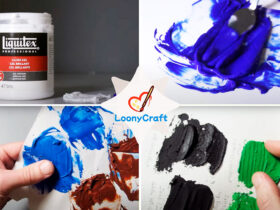

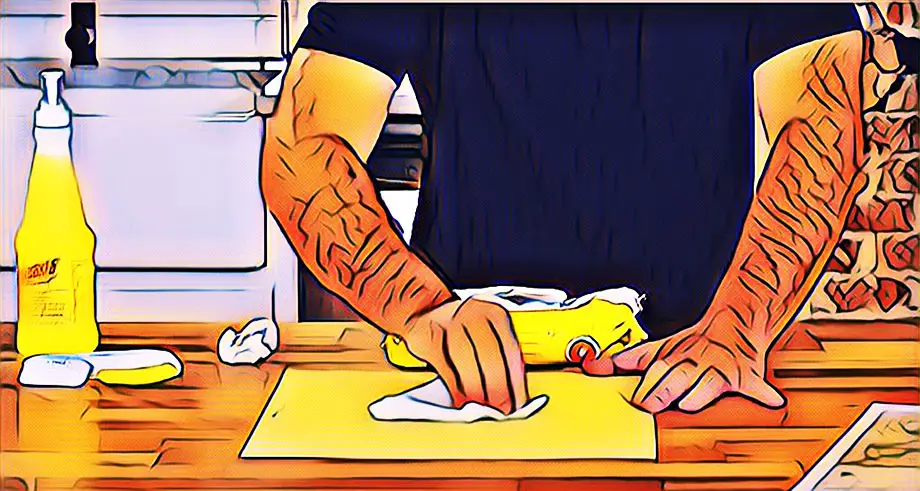

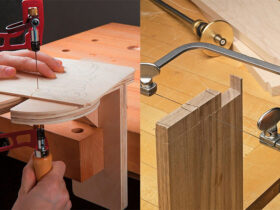





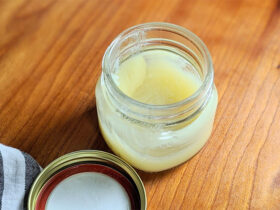
Leave a Reply